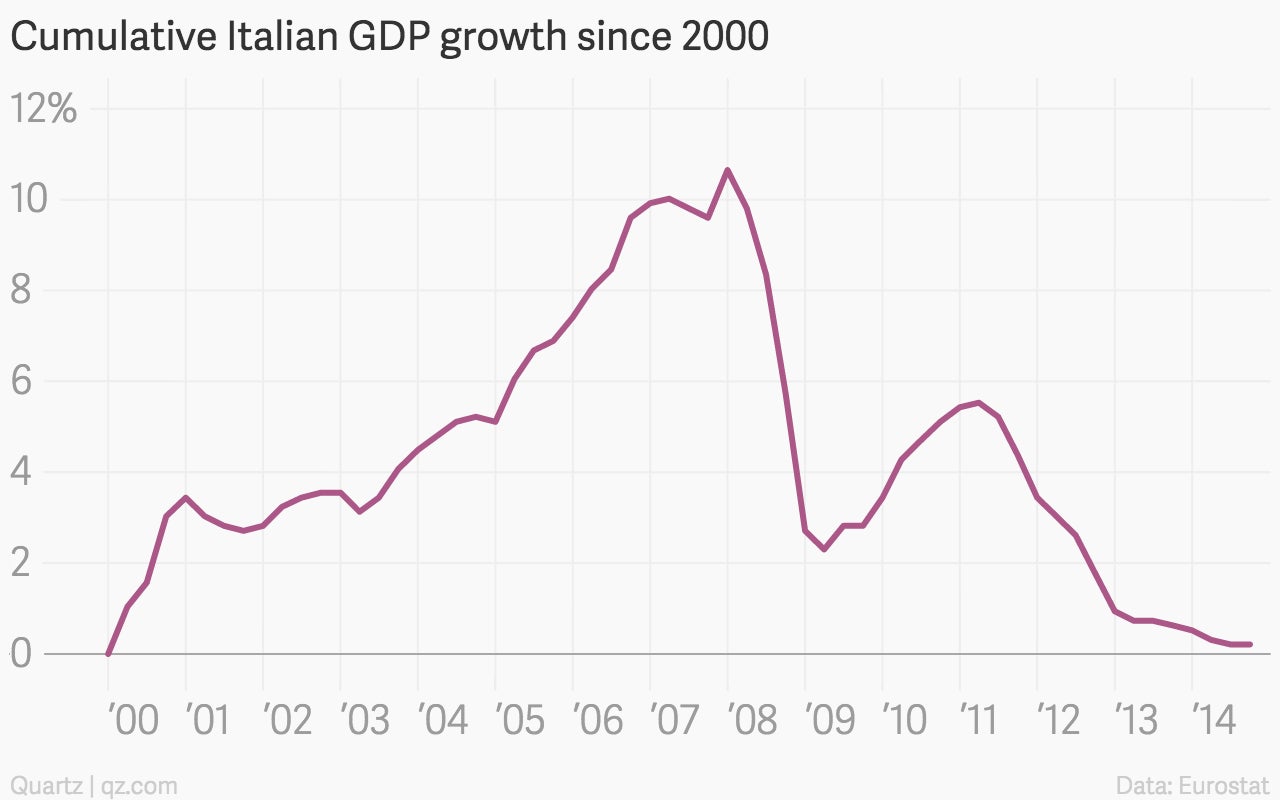Welcome to Italy, where stagnation is an achievement
There was relief, and even a bit of optimism, around the euro zone today, as fourth-quarter GDP growth in the bloc beat expectations. Some perspective is required, though—GDP grew just 0.3% from the third quarter. This is hardly an inspiring number, even if it was more than analysts anticipated.


There was relief, and even a bit of optimism, around the euro zone today, as fourth-quarter GDP growth in the bloc beat expectations. Some perspective is required, though—GDP grew just 0.3% from the third quarter. This is hardly an inspiring number, even if it was more than analysts anticipated.
Even the long-suffering Italian economy outperformed expectations. But in its case, that meant fourth-quarter growth was nil, which beat the market’s expectation of yet another quarter of contraction.
Italy’s economy had been shrinking since mid 2011, its longest recession on record. In that context, stagnation is something of an achievement. But it won’t do anything to claw back the ground lost since the global financial crisis. The Italian economy is essentially the same size as it was in 2000:

Although the headline figure shows no growth in the fourth quarter, Azad Zangana of Schroders, an asset manager, points out that this is thanks to rounding. In fact, Italy’s economy shrank by €72 million ($82 million) in the fourth quarter, so it (just barely) remains in a technical recession.
Greek finance minister Yanis Varoufakis recently took a swipe at Italy, saying that the country “also risks bankruptcy” thanks to its “unsustainable” debt burden. Even if this was meant to deflect from Greece’s deeper troubles, it was telling that he would single out Italy as a kindred spirit in economic adversity.
The European Commission reckons that Italy will eke out 0.6% growth this year (pdf), thanks largely to the weaker euro boosting exports. But given its long history of disappointment, analysts and investors will believe it when they see it.